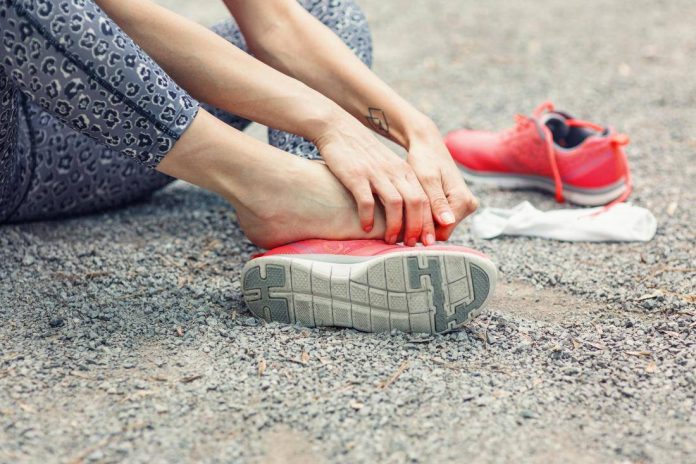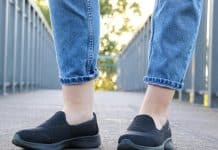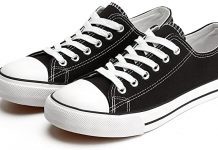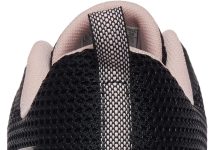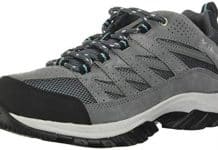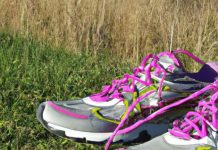Listed here are the most frequent factors behind pain on the outside of the foot.
Utilize the links to learn more and understand how to best treat pain in this field (remember, you should visit a physician to diagnose your trouble effectively).
Pain on the outside of the foot can be a frustrating and debilitating experience, especially when walking. This type of pain has many possible causes, ranging from minor injuries to more severe conditions. Understanding the underlying cause of the pain is crucial to finding the appropriate treatment and preventing further damage.
A lateral ankle sprain is one of the most common causes of pain on the outside of the foot. This type of injury occurs when the ligaments on the outer side of the ankle are stretched or torn.
Lateral ankle sprains can happen during physical activity or as a result of an accident and can cause pain and swelling on the outside of the foot. Treatment may include rest, ice, compression, elevation of the affected foot, physical therapy, and supportive devices like braces or crutches.
Other possible causes of pain outside the foot include stress fractures, tendinitis, peroneal tendonitis, and cuboid syndrome. Stress fractures are tiny cracks in the bones of the foot that can cause pain and swelling. Tendinitis is inflammation of the tendons that attach to the foot and can cause pain on the outside of the foot.
Peroneal tendonitis is inflammation of the tendons that run along the outer edge of the foot, which can cause pain and swelling. Cuboid syndrome is a condition in which the cuboid bone in the foot becomes displaced, which can cause pain on the outside of the foot.
Anatomy of the Foot
The human foot is a complex structure comprising bones, ligaments, tendons, and nerves. Understanding the foot’s anatomy is essential in identifying the causes of pain outside the foot when walking.
Bones
The foot is made up of 26 bones, including the ankle bone, the tarsal bones, and the metatarsals. The ankle bone, or the talus bone, connects the foot and the leg. The tarsal bones comprise seven bones that comprise the back of the foot. The metatarsals are the bones that make up the front of the foot and connect to the toes.
Ligaments
Ligaments are muscular, fibrous tissues that connect bones. The foot has many ligaments, including ankle ligaments, which connect the ankle bone to the tibia and fibula bones in the leg.
Tendons
Tendons are tough, fibrous tissues that connect muscles to bones. The foot has many tendons, including the Achilles tendon, which connects the calf muscles to the heel bone.
Nerves
The foot has many nerves, including the lateral plantar nerve, which runs outside the foot. These nerves provide sensation to the foot and allow it to move.
The cuboid bone is a cube-shaped bone on the outside of the foot that connects to the heel bone and the fourth and fifth metatarsal bones. The joints in the foot allow it to move in many directions. The calf muscles, including the gastrocnemius and soleus, attach to the heel bone via the Achilles tendon. The little toe and big toe each have their bones, ligaments, tendons, and nerves that allow them to move independently.
Common Causes of Lateral Foot Pain
Lateral foot pain is a common condition that affects many people. Various factors, including injuries, overuse, biomechanical issues, and systemic conditions, can cause it. This section will discuss the most common causes of lateral foot pain.
Injuries
Injuries are one of the most common causes of lateral foot pain. Ankle sprains, stress fractures, and fractures are some of the injuries that can cause lateral foot pain. Ankle sprains occur when the ligaments in the ankle are stretched or torn. This can cause pain on the outer side of the foot. Stress fractures and fractures can also cause pain on the foot’s outer side. These injuries are usually caused by overuse or trauma.
Overuse Conditions
Overuse conditions are another common cause of lateral foot pain. Tendonitis and peroneal tendonitis are overuse conditions that can cause lateral foot pain. Tendonitis is an inflammation of the tendons that connect the muscles to the bones. Peroneal tendonitis is an inflammation of the peroneal tendons that run along the outer side of the ankle. These conditions are usually caused by repetitive activities such as running or jumping.
Biomechanical Issues
Biomechanical issues can also cause lateral foot pain. Cuboid syndrome, flat feet, and tarsal coalition are some of the biomechanical issues that can cause lateral foot pain. Cuboid syndrome occurs when the cuboid bone in the foot is displaced. Flat feet occur when the arches of the feet collapse. Tarsal coalition occurs when two or more bones in the foot are fused. These issues can cause pain on the outer side of the foot.
Systemic Conditions
Systemic conditions such as arthritis, rheumatoid arthritis, osteoarthritis, bunions, bunionettes, corns, and calluses can also cause lateral foot pain. Arthritis is an inflammation of the joints that can cause pain and stiffness. Bunions and bunionettes are deformities of the foot that can cause pain on the foot’s outer side. Corns and calluses are thickened areas of skin that can cause pain and discomfort. These conditions can affect the joints, tendons, and bones in the foot, causing lateral foot pain.
In conclusion, lateral foot pain can be caused by various factors. Identifying the underlying cause of the pain is essential to determine the appropriate treatment. If you experience lateral foot pain, it is recommended to consult with a healthcare professional for an accurate diagnosis and treatment plan.
Diagnosis and Imaging
A thorough physical examination is necessary to diagnose the cause of pain on the outside of the foot. The doctor will assess the patient’s gait, range of motion, and specific areas of tenderness on the foot. The physical examination will help the doctor identify any deformities, swelling, or redness that may indicate an underlying condition.
Physical Examination
During the physical examination, the doctor will examine the foot and ankle to identify any abnormalities in the bones, ligaments, and tendons. The doctor may also check for any signs of inflammation or infection. The physical examination may include the squeeze test, which involves squeezing the foot to check for pain in the midfoot area.
Radiographic Tests
Radiographic tests such as X-rays can diagnose fractures, dislocations, and other bone-related problems that may be causing pain on the outside of the foot. X-rays help identify bone spurs and bony growths that can develop outside the foot due to excessive pressure.
Advanced Imaging
In some cases, advanced imaging such as CT scans, MRIs, or ultrasounds may be necessary to diagnose the cause of pain on the outside of the foot. CT scans help identify fractures and dislocations, while MRIs can help diagnose soft tissue injuries such as ligament or tendon tears. Ultrasounds help diagnose conditions such as plantar fasciitis, an inflammation of the band of tissue that runs along the bottom of the foot.
In summary, a thorough physical examination is the first step in diagnosing the cause of pain on the outside of the foot. Radiographic tests such as X-rays can diagnose bone-related problems. In contrast, advanced imaging such as CT scans, MRIs, or ultrasounds may be necessary to diagnose soft tissue injuries.
Treatment Strategies
Several treatment strategies are available for pain on the outside of the foot when walking. These strategies typically involve a combination of initial management, medication and injections, supportive devices, rehabilitation and therapy, and surgical interventions.
Initial Management
Initial management for pain on the outside of the foot when walking involves the RICE method, which stands for Rest, Ice, Compression, and Elevation. This method is effective in reducing pain and swelling. Resting the affected foot is essential to prevent further damage. Applying ice to the affected area for 20 minutes daily can help reduce pain and swelling. Compression can be achieved by wrapping the affected area with an elastic bandage. Elevating the affected foot above the heart can also help reduce swelling.
Medication and Injections
Medication and injections can reduce pain and inflammation. Over-the-counter pain relievers such as ibuprofen and acetaminophen can manage pain. Steroid injections can reduce inflammation and pain in the affected area.
Supportive Devices
Supportive devices such as braces, orthotics, and shoe inserts can provide support and reduce pain. Braces and orthotics can help stabilize the foot and reduce stress on the affected area. Shoe inserts can help cushion the foot and reduce pressure on the affected area. Supportive shoes can also be used to reduce stress on the affected area.
Rehabilitation and Therapy
Physical therapy can improve strength and flexibility in the affected foot. This can help reduce pain and prevent further injury. Exercises such as stretching and strengthening exercises can be used to improve mobility and reduce pain. In some cases, a cast or crutches may be necessary to immobilize the affected foot and allow it to heal.
Surgical Interventions
Surgical interventions may be necessary in severe cases of pain on the outside of the foot when walking. Surgery can repair damage to the affected area and reduce pain. In some cases, corticosteroid injections may also be used to reduce inflammation and pain in the affected area.
Prevention and Maintenance
Footwear Advice
Wearing proper footwear is crucial to prevent foot pain. One should wear shoes that provide adequate support to the foot and ankle. Shoes with good arch support, cushioning, and stability can help reduce the pressure on the feet while walking, running, or participating in sports. Choosing shoes that fit well and have enough room for the toes to move freely is also essential. Tight-fitting shoes can cause blisters, calluses, and other foot problems.
Lifestyle Modifications
Certain lifestyle modifications can help prevent foot pain. Maintaining a healthy weight can reduce the pressure on the feet and prevent foot pain. Additionally, avoiding high-impact activities that put excessive stress on the feet, such as jumping or running on hard surfaces, can help prevent foot pain. If one has to stand for long periods, taking frequent breaks and stretching the feet can help reduce the risk of foot pain.
Exercise and Strengthening
Regular exercise and strengthening can help prevent foot pain. Stretching exercises can improve the range of motion of the feet and ankles, reducing the risk of foot pain. Strengthening exercises can help improve the stability of the feet and ankles, reducing the risk of injuries. One can also try low-impact exercises such as swimming or cycling to improve cardiovascular health without putting too much stress on the feet.
In conclusion, preventing foot pain requires a combination of proper footwear, lifestyle modifications, and regular exercise and strengthening. By following these tips, one can reduce the risk of foot pain and enjoy physical activity without discomfort.
When to Seek Professional Help
If the pain on the outside of the foot does not improve with rest, or if there is swelling, bruising, inflammation, or tenderness, it is essential to seek professional help. These symptoms could indicate a more severe injury, such as a sprained ankle, partial dislocation, or plantar fasciitis.
If the pain is sharp and sudden, or if there is instability or weakness in the foot, it is also recommended to seek medical attention. These symptoms could indicate a more severe injury, such as a fracture or dislocation.
In some cases, tingling or burning sensations may also accompany lateral foot pain. This could be a sign of nerve damage or neuropathy, which a medical professional should evaluate.
It is essential to seek professional help if the pain on the outside of the foot is severe or persistent, as this could indicate a more serious underlying condition. A medical professional can diagnose properly and recommend appropriate treatment options to alleviate the pain and prevent further injury.
Foot Pain in Arches, Ball, Heel, Toe and Ankle Problems
A fracture of the long bone behind your little feet (5th metatarsal) can be quite serious and repellent to recovery, so be sure not to wait for your diagnosis.
Utilize the links below and follow our instructions to deal with these nagging problems.
A number of the common factors behind pain on the outside of your foot are the following: to be able from problems near the toe proceeding back again toward the heel.
Utilize the links to find thorough prognosis and treatment home elevators for each problem:
5th Bottom (baby bottom) Hammertoe
– A curled pinky bottom often ends in sneaker pressure that causes pain and perhaps corns forming.
Utilize the link to understand how hammertoe pain can be eradicated.
Tailor’s Bunion
– A bump privately of the foot at the top of the 5th metatarsal bone (just behind the tiny feet).
Tailor’s bunions may become agonizing and inflamed when the enlarged bone gets pressed on from your shoes.
There are various available treatments, including surgery – but surgery should be utilized only as a last resort.
Metatarsal Stress Fracture
– A little fracture through the outside of the bone triggered by overuse alternatively than acute injury.
It is more prevalent on the next and 3rd metatarsals but may appear in the 5th metatarsal outside the foot.
Inflammation is standard, as is very localized pain when you press on the metatarsal bone.
Recommendable: Lateral foot pain: Symptoms, Causes, and treatment
5th Metatarsal Shaft Fracture
– This is often a severe fracture that may necessitate non-weight bearing or surgery to recover.
When you suspect that you will find it fractured, this bone is cured immediately.
Dorsal Compression Syndrome
– Achy pain with activity that is more toward the very best of the foot than the side.
Often due to the flattening of the arch causing compression between your bones.
Utilize the link to find out about “dorsal compression syndrome.”
5th Metatarsal Tuberosity Fracture
– An escape of the extreme foot of the 5th metatarsal bone. This occurs often after twisting your ankle joint. If the bottom of your 5th metatarsal is painful after an ankle sprain, you will need an x-ray.
Peroneal Tendonitis
– The most frequent reason behind outside foot pain. Due to inflammation, where the peroneus brevis tendon attaches to the foot of the 5th metatarsal.
Usually responds speedily to medicine.
Lastly, Foot Arthritis
– Often triggers a profound achy pain feeling together with the foot just before the ankle. The effect of putting away the cartilage between your joint parts privately and the surface of the foot.
Exercises to relieve outside foot pain
If you are experiencing lateral foot pain and exercise has been suggested by your doctor, you should follow up, do the exercises, and see how symptoms will subside. For instance, flexibility exercises can help improve muscle strength. Here are a few specific exercises known to help:
- Static ankle strengthening: This type of exercise keeps the ankle static. Basically, stretching by extending the muscle to the end of its range of motion and holding it at this position is considered a static exercise. It is an excellent way to start exercising after an injury because it can minimize the risk of further damage.
- Resistance exercises: These exercises give the foot something to push against to help build up strength around the foot and ankle. Therabands, which are big elastic bands, are often suggested.
- Dynamic exercises: Simple activities, including picking up marbles with your toes, can increase the foot’s strength.
- Calf strengthening: Weakness in the calf muscles can impact the foot, so doing calf-strengthening exercises can help.
Exercises for lateral foot pain should not cause you further pain or injury.
If you are struggling with a specific exercise that you have been prescribed, stop and discuss it with your doctor. You may need a minor adjustment to your technique or a complete change in your exercise routine.
Untreated lateral foot pain can lead to impaired function, deformity, and chronic inflammation, putting you in a position where you require surgery.
It doesn’t have to come to this if you get a proper diagnosis and follow treatment instructions.
Frequently Asked Questions
What are the common causes of lateral foot pain during ambulation?
Ankle sprains, stress fractures, and peroneal tendonitis commonly cause lateral foot pain during ambulation. These conditions can occur during activities that cause the foot to twist, roll inward, or suddenly change directions, such as basketball, volleyball, trail running, or hiking on uneven surfaces.
How can peroneal tendonitis contribute to pain on the outside of the foot?
Peroneal tendonitis is an inflammation of the peroneal tendons, which run along the outer edge of the foot and ankle. It can contribute to pain outside the foot by causing swelling, tenderness, and pain. This condition is often due to overuse or repetitive stress on the tendons.
What might cause persistent pain on the side of the foot lasting for months?
A variety of conditions, such as stress fractures, plantar fasciitis, or nerve entrapment, may cause persistent pain on the side of the foot lasting for months. It is essential to consult a healthcare professional for proper diagnosis and treatment.
Can walking barefoot exacerbate pain on the outside of the foot?
Walking barefoot can exacerbate pain on the outside of the foot by putting additional stress on the foot and ankle. It is recommended that supportive shoes with good arch support be worn to help alleviate lateral foot pain.
What are the typical symptoms associated with stabbing pain on the outside of the foot?
Stabbing pain outside the foot is often associated with stress fractures, peroneal tendonitis, or nerve entrapment. Other symptoms may include swelling, tenderness, and difficulty walking.
Is it possible for plantar fasciitis to manifest pain on the lateral aspect of the foot?
While plantar fasciitis is typically associated with pain on the bottom of the foot, it is possible for it to manifest pain on the lateral aspect as well. This is because the plantar fascia attaches to the heel bone and runs along the bottom of the foot, providing support to the arch. When this fascia becomes inflamed, it can cause pain in various parts of the foot, including the lateral aspect.
Plantar Fasciitis Feet Insoles Arch Supports Orthotics Inserts Relieve Flat Feet, High Arch, Foot Pain Mens 13-13 1/2
$15.98 in stock
Plantar Fasciitis Feet Insoles Arch Supports Orthotics Inserts Relieve Flat Feet, High Arch, Foot Pain Mens 11-11 1/2 | Womens 13-13 1/2
$15.98 in stock
DR-HO'S Circulation Promoter Basic Package - TENS Unit and EMS and 1 Year Warranty - Improves Circulation, Reduces Swelling, and Alleviates Feet and Leg Pain (Includes DR-HO'S Pain Therapy System)
Dr. Foot's Supination & Over-Pronation Corrective Shoe Inserts, Medial & Lateral Heel Wedge Insoles for Foot Alignment, Knee Pain, Bow Legs, Osteoarthritis - 3 Pairs (Black)
Step Right Insoles Relieves -Plantar Fasciitis- Neuropathy- Poor Circulation- Foot Pain and Heel Spurs (XL Mens 11-13.5)
Plantar Fasciitis and Heel Spur Pain Relief Full Length Orthotic Insole Inserts Arch Supports with Thick Gel Cushioning Comfortable Feet (Mens 5-9 Womens 6-11)
Samurai Insoles Ninjas Arch Support Shoe Inserts- Plantar Fasciitis, Flat Feet, Shin Splint Relief for Women and Men
Powerstep Original Orthotics-U Insole, Blue/Black, Men's 7-7.5, Women's 9-9.5
$39.95 in stock
1 used from $34.39
FUTURO Plantar Fasciitis Night Support, Nighttime Support for Plantar Faciitis, Breathable, One Size
$22.30 in stock
Superfeet unisex adult Green Premium-u PREMIUM U Orthotic Shoe, Green, C 6.5 - 8 US Womens 5.5 7 US Mens
$38.46 in stock
Heel That Pain Sensitive Feet Starter Kit - Gel and Original Heel Seats Foot Orthotic Inserts - Heel Cups Cushions Insoles for Plantar Fasciitis, Heel Spurs, Medium (Women's 6.5-10, Men's 5-8)
Powerstep Unisex's Plantar Fasciitis Shoe Inserts Orthotic, Red/Blue, Men's 5-5.5, Women's 7-7.5
Powerstep Pinnacle Arch Support Orthotic Insert for Plantar Fasciitis, Equipment for Home Workouts, BLUE, Men's 6-6.5, Women's 8-8.5
$41.49 in stock
Powerstep unisex adult Pinnacle Maxx Orthotic Insole Shoe Inserts for Men and Women Workout Gear Home Workou, Maroon, Men s 12-13 Women 14-15.5 M US
Heel That Pain Plantar Fasciitis Insoles | Heel Seats Foot Orthotic Inserts, Heel Cups for Heel Pain and Heel Spurs | Patented, Clinically Proven, 100% Guaranteed | Blue, Medium (W 6.5-10, M 5-8)
$22.95 in stock
Orthotic Inserts 3/4 Length, High Arch Support Foot Insoles for Over-Pronation Plantar Fasciitis Flat Feet Heel Pain Relief Shoe Inserts for Running Sports Men and Women, L|Men's 9-11, Women's 10-12
$17.83 in stock

